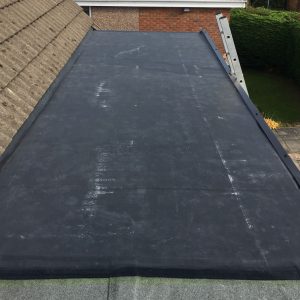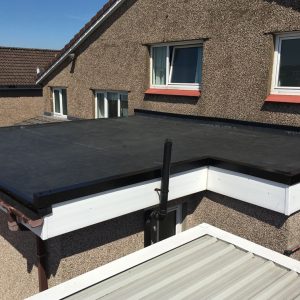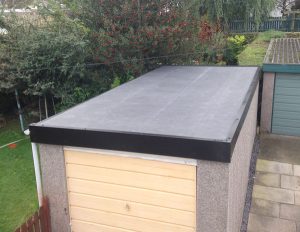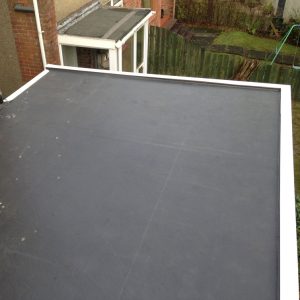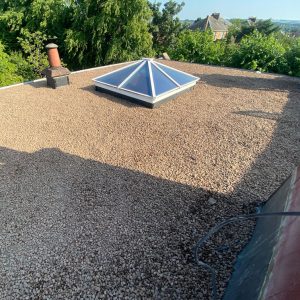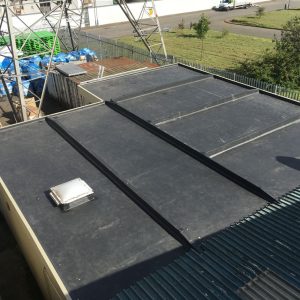Firestone EPDM rubber roofing is a type of single-ply roofing membrane that is commonly for flat roofs on commercial and residential buildings. EPDM roofing is known for its durability, weather resistance, and ease of installation. It is used in various applications, from commercial and industrial buildings to residential homes, and is often chosen for its cost-effectiveness and reliability.
WHY GET A FIRESTONE FLATROOF INSTEAD OF A FELT ROOF?
- Weather Resistance: The UK experiences a lot of rain and moisture, which can be detrimental to roofing materials. Firestone EPDM rubber roofs, are highly resistant to water and are not prone to water damage, making them a good choice for the UK’s climate. Felt roofs, especially older installations, can be more vulnerable to water penetration and deterioration.
- Durability: Firestone EPDM rubber is known for its long-lasting durability and resistance to weathering, including resistance to UV rays. It is less likely to crack or degrade over time compared to felt roofs, which can be more susceptible to brittleness and damage from UV exposure.
- Low Maintenance: EPDM roofs require minimal maintenance, which can be particularly advantageous in the UK’s climate, where regular inspections and repairs may be necessary for felt roofs.
- Insulation Options: Firestone EPDM roofs can be easily combined with insulation materials to improve energy efficiency and provide better thermal performance, which is beneficial in a country with variable weather conditions like the UK.
- Building Regulations Compliance: EPDM roofing systems often meet or exceed building regulations and standards for flat roofing in the UK. Compliance with regulations is essential, and EPDM is a recognized and approved roofing material.
- Resilience to Ponding Water: EPDM roofs are designed to resist ponding water, a common issue on flat roofs, while felt roofs may be more susceptible to water damage if not adequately maintained.
- Sustainability: EPDM roofing is considered more environmentally friendly due to its recyclability and energy-efficient properties compared to traditional felt roofs.
WHAT DOES A FIRESTONE INSTALLATION ENTAIL?
A Firestone EPDM roofing installation involves, preparation of the roof deck, attachment of the EPDM membrane by adhesion, precise membrane installation with attention to seam sealing and flashing at vulnerable points, detail work for edge trims and termination bars, quality control checks, thorough clean-up, a final inspection to ensure proper installation, and issue of a 20-year product guarantee.
Choosing experienced roofing contractors who follow Firestone’s installation guidelines is essential for the long-term performance and durability of the EPDM roofing system. Firestone only issues 20-year product guarantee’s to certified firestone installers, which is why Metaclad can offer a 20-year product and installers guarantee.
HOW RELIABLE IS FIRESTONE EPDM ROOFING?
While specific life expectancies can vary depending on these factors, it’s not uncommon for Firestone EPDM roofing to last 50 years or more. To maximize the reliability of your Firestone EPDM roof, it’s recommended to work with certified roofing professionals. While Firestone provides a 20-year product guarantee, you should hope to get much longer out of the roof, which is considered a massive advantage against other flat roofing materials in the UK.

